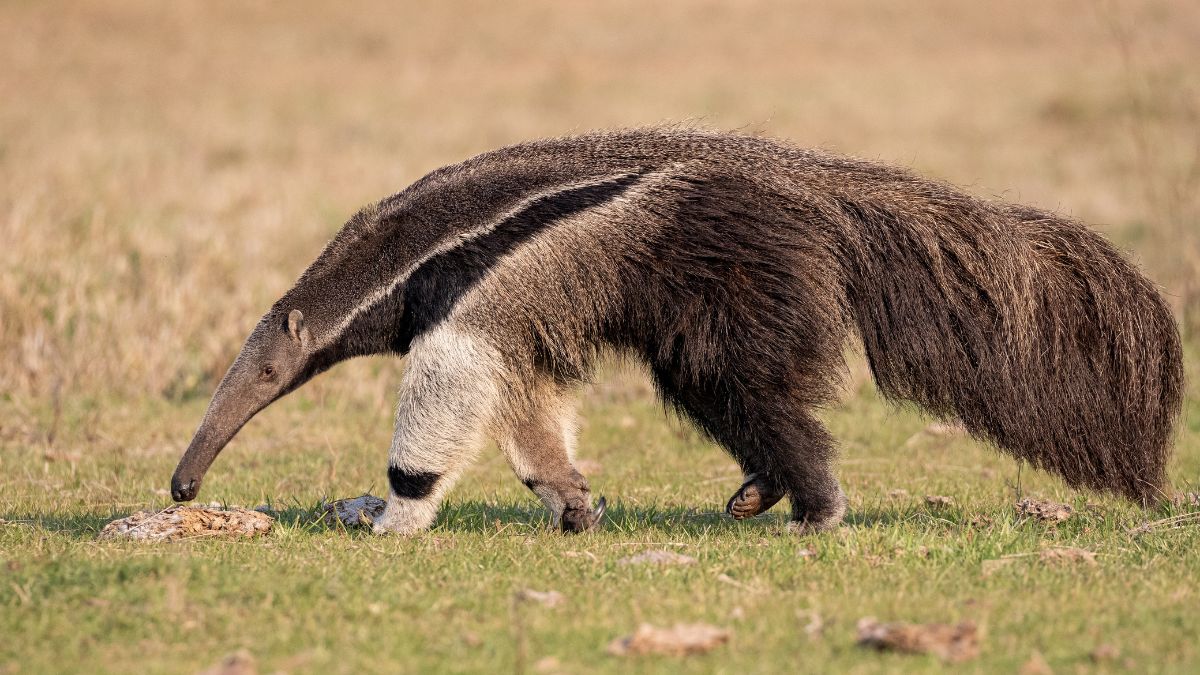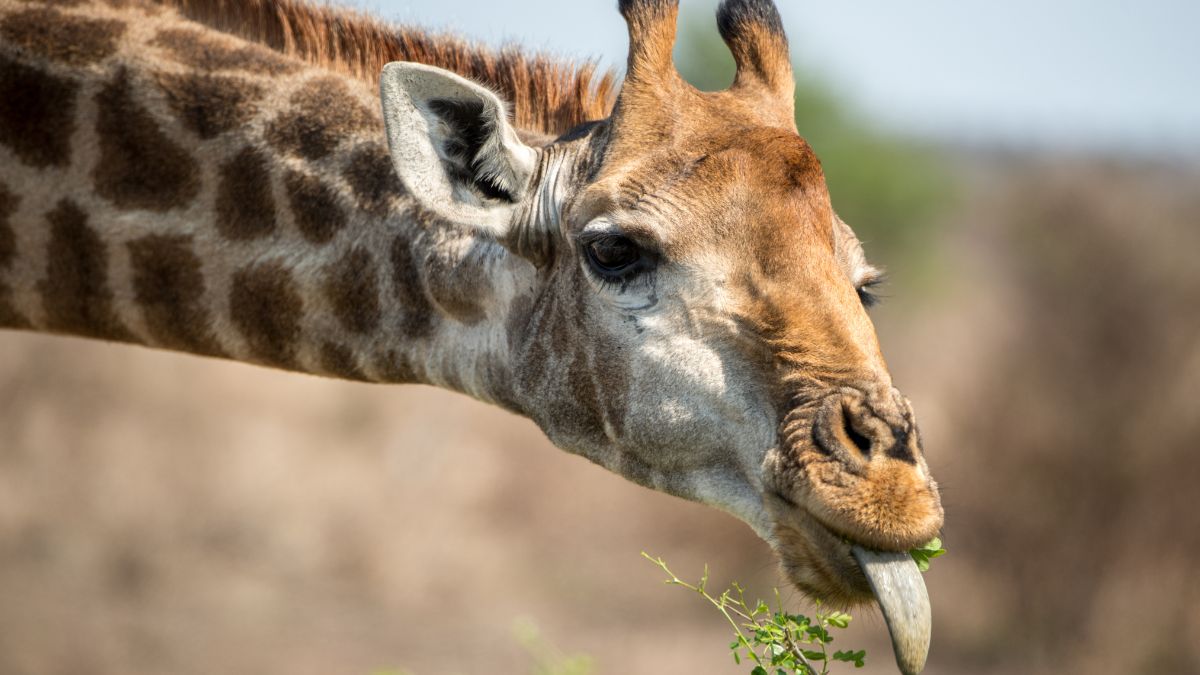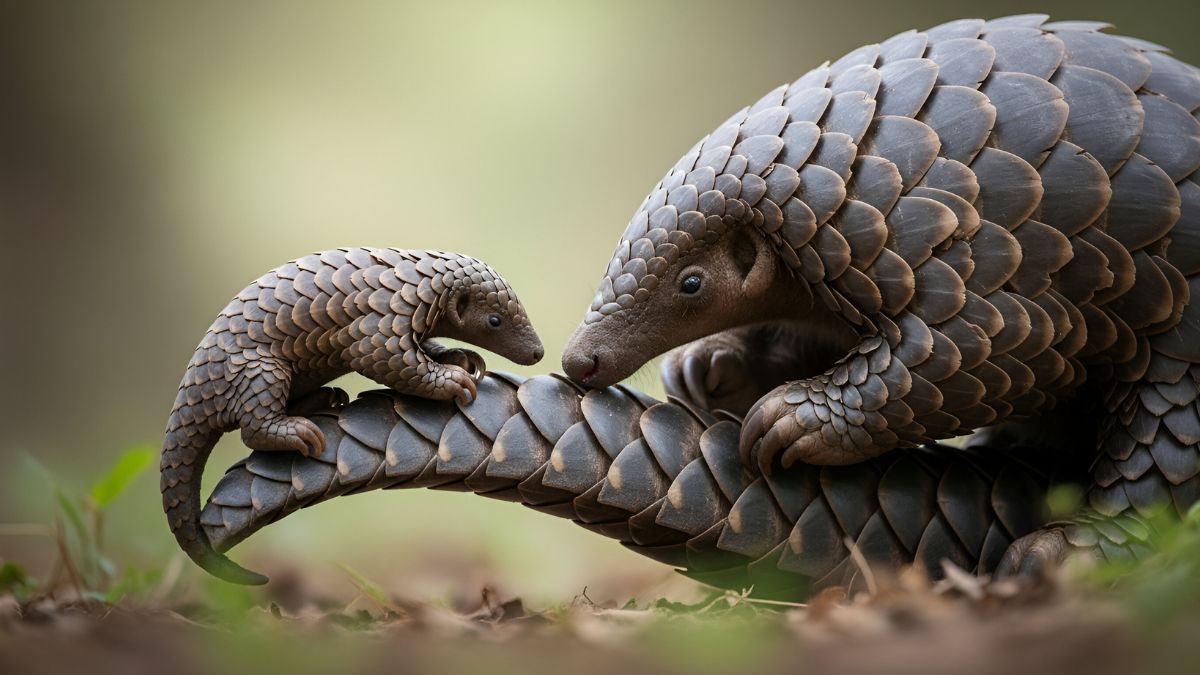Animal with Long Tongue: The animal kingdom is full of fascinating adaptations, and one of the most extraordinary is the long tongue. From helping animals gather food to playing a role in communication or defence, these organs serve many important purposes. A long tongue can mean survival, allowing an animal to reach food sources that others cannot, to groom itself, or even to scare away enemies. Whether it’s a chameleon catching insects with lightning speed or a giraffe carefully plucking leaves from thorny trees, every species uniquely uses its tongue. These remarkable creatures showcase how nature designs every feature with precision, efficiency, and purpose.
Check out:Top 10 Animals with Strongest Bite Force: Check List Here!
Animals with Long Tongues
Let’s explore a list of animals known for their unusually long tongues-
| Sr. No. | Animal |
| 1. | Giant Anteater |
| 2. | Giraffe |
| 3. | Chameleon |
| 4. | Sun Bear |
| 5. | Pangolin |
| 6. | Hippopotamus |
| 7. | Woodpecker |
| 8. | Penguin |
| 9. | Eagle |
| 10. | Blue-Tongued Skink |
1. Giant Anteater

The Giant Anteater has one of the longest tongues in the animal kingdom, capable of extending up to 60 centimeters to reach deep inside ant and termite nests. This sticky, slender tongue is covered with tiny, backwards-facing spines that help it collect thousands of insects daily. The anteater feeds incredibly fast, moving its tongue in and out about 150 times per minute, and to achieve this exceptional reach, the tongue is anchored near its breastbone instead of its throat.
2. Giraffe

The Giraffe has a remarkable tongue that measures about 45 to 50 centimeters long. This tongue is a dark blue-black color, which is thought to help protect it from sunburn while the giraffe spends long hours feeding. Most importantly, the tongue is prehensile, meaning it's strong and flexible enough to wrap around branches and precisely pull leaves, often from tall, thorny acacia trees. This amazing adaptation gives the giraffe a significant survival advantage by letting it reach food that other plant-eaters in the dry African savannas simply cannot.
3. Chameleon

The Chameleon has one of nature's most incredible feeding tools, a tongue that can stretch up to twice the length of its body! This super-elastic organ shoots out in less than a second to capture insects with amazing pinpoint accuracy. The tip of the tongue is equipped with a suction-like pad that helps it securely grab and hold the prey. The incredible speed, strength, flexibility, and precise timing of this action make the chameleon's tongue a truly impressive adaptation.
4. Sun Bear

The Sun Bear, although the smallest of all bear species, has a surprisingly long tongue that can extend up to 25 centimeters. This feature is crucial for its survival, allowing it to reach deep into tree trunks and beehives to extract its favorite foods: insects, honey, and larvae. This long tongue works together with its strong claws and excellent sense of smell, making the sun bear a highly skilled forager in the dense forests of Southeast Asia.
5. Pangolin

The Pangolin has a truly unique feature, a tongue that can reach up to 40 centimeters long, making it longer than the rest of its body. Unlike most animals, this specialized tongue isn't rooted in the mouth but actually extends deep into the chest cavity when retracted. The tongue is covered in sticky saliva, allowing the pangolin to efficiently gather and eat its diet of ants and termites.
6. Hippopotamus
-1762921728593.jpg)
The hippopotamus actually has a surprisingly long and muscular tongue, which can reach up to 60 centimeters in adult animals, much longer than people usually think. This large tongue is essential for the hippo's diet, helping it to gather, manipulate, and swallow the huge amounts of grass and vegetation it eats every day. Beyond just feeding, the tongue is also important for communication and social interaction within hippo groups. Its great size is a feature of the hippo's massive build, supporting its heavy jaw and complex way of digesting food, yet they can use it surprisingly delicately when grazing or feeding underwater.
7. Woodpecker

The woodpecker has an amazing tongue that's much longer than its beak and can actually wrap all the way around the back of its skull when it's not being used. This unique feature allows the bird to stick its tongue deep into tree bark to hunt for hidden insects. The tip of the tongue is often barbed, and it's coated with sticky saliva, which helps the woodpecker easily pull out grubs and larvae from the wood. This incredible adaptation is not only perfect for feeding but also helps protect the bird's brain by acting as a kind of cushion when it's rapidly pecking at hard wood.
Check out: List of 9 Incredible Animals that can Survive in Space: Revealed
Comments
All Comments (0)
Join the conversation